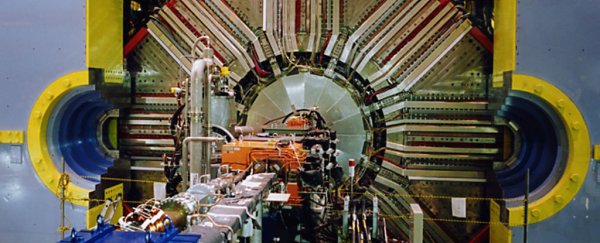When a new atom smasher hits the scene, there are a couple of milestones scientists use to gauge its success, and Japan's SuperKEKB accelerator just passed the first big one. Referred to as its 'first turns', the giant machine managed to circulate a beam of electrons and positrons in opposite directions for the first time, both moving at nearly the speed of light, though not at the same time.
According to the Pacific Northwest National Laboratory, the first beam of positrons was successfully circulated through the accelerator's main ring - a narrow, circular tube that lives 10 metres underground and has a circumference of roughly 3 kilometres - on February 10. Then, on February 26, a beam of electrons did the same thing in the opposite direction.
Why is this important? Well, in order to have these particles collide one day, the accelerator has to first reliably accelerate particles in both directions at nearly the speed of light. Over the next year or so, the team will eventually turn both beams on at the same time and have the particles smash into one another.
In other words, 'first turns' means that the machine is primed to start breaking atoms at ludicrous speeds to hopefully allow researchers a unique look at the Universe's fundamental building blocks.
Japan's SuperKEKB is designed to produce 40 times more collisions than its predecessor, and will use the Belle II detector - a piece of technology that was developed by over 600 scientists from 23 countries - to observe them all.
Though it looks like a portal to another universe, the Belle II detector is, in essence, a very, very large camera that can record about 30,000 collisions per second - a task made all the harder when you consider that the beam it's 'photographing' is only 100 nanometres thick.
If all goes well, researchers from around the world will get a chance to analyse the data collected at the new collider. These new discoveries, which usually come in the form of never-before-seen particles, could answer some super important questions about our Universe, such as why there's an abundance of matter despite the fact that matter and anti-matter should have logically cancelled each other out.
These questions, if answered, could literally change everything we know or thought we knew about how the Universe was created, and how it keeps existing.
But even after it's fully operational, it will still take years for scientists to look over all of the data collected by the Belle II detector, which is completely reasonable, at 30,000 collisions every second. Until then, we can continue celebrating every milestone along the way, because each one is a truly ridiculous achievement.
